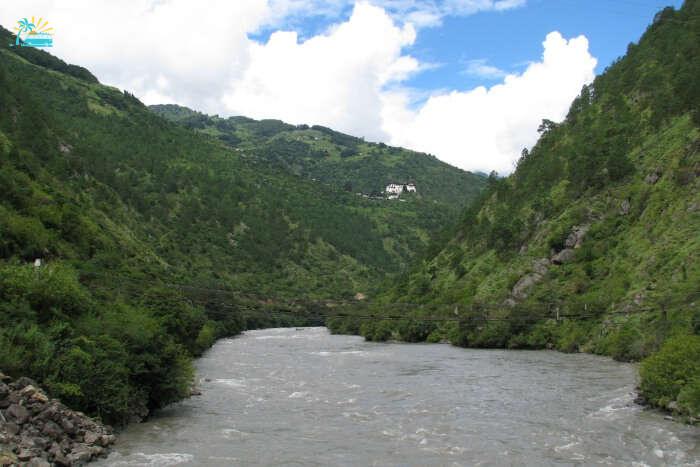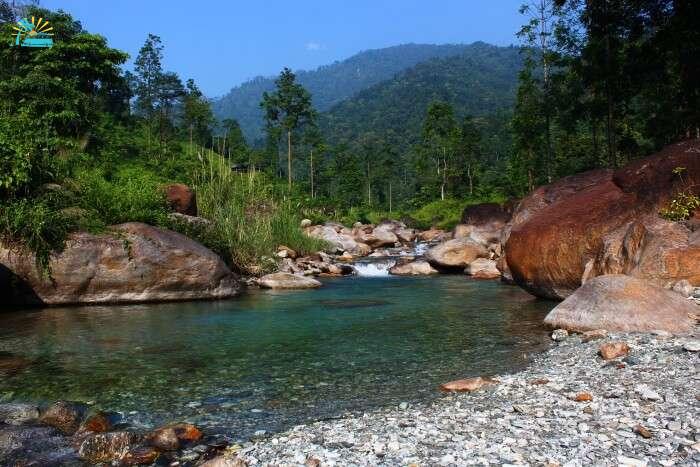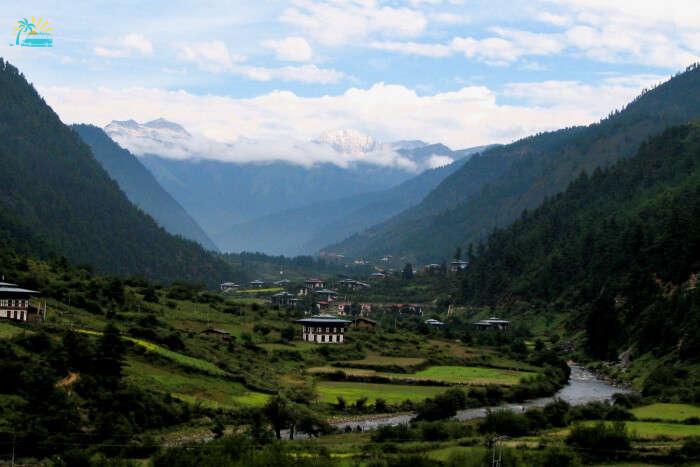Bhutan also commonly known as the Kingdom of Bhutan. It is an inland nation located in the Eastern Himalayan Mountains of Central Asia. This small nation covers an area of approximately 38 thousand square kilometers and has a large population of about 800 thousand people. Bhutan is famous for its heritage, rich past, and age-old customs. It boasts a remarkable terrain and diverse wildlife that captivates a large number of visitors every year. The splendid rivers of Bhutan add to the beauty and majesty of the nation. The glaciers in Bhutan are a crucial and never-ending source of water for the numerous main rivers in the nation. Bhutan is a paradise for wildlife and nature enthusiasts. It is visited by tourists from all parts of the globe who come to revel in the magnificence of the picturesque riverside. The rivers in Bhutan are filled with enigma, and the people share a sacred bond with them. After traversing various regions of the nation, all Bhutan Rivers ultimately merge with the Brahmaputra River in India.
10 Rivers in Bhutan Worth Discovering
Here we present the most renowned rivers in Bhutan that you must explore at least once on your upcoming journey to the nation. Have a look:

1. Wong Chhu
Wong Chhu, also known as the Raidak River, is famous as a cross-frontier river and a tributary of the Brahmaputra River. The entire length of the splendid Raidak River is 370 kilometers. It flows through three countries, namely Bhutan, Bangladesh, and India. The Raidak River originates from the Himalayan glaciers in Tibet. The river courses through some well-known and significant valleys in Bhutan, including Paro, Thimphu, and Haa. It is a vital part of the west-central region of Bhutan as it enters the country through its westernmost border. Eventually, it merges with the Brahmaputra River. In addition to its natural beauty, Raidak River is highly renowned for thrilling rafting and kayaking adventures. The most preferred spots for these adrenaline-pumping sports are in Paro or Thimphu due to the multitude of options available. Furthermore, the Wang Chu river is also home to the Tala Hydroelectric Power Station.

2.Torsa Chhu
Torsa Chhu, also known as Kambu Maqu, Machu, and Amo Chhu, originates from the Chumbi Valley in Tibet, China. When it enters Bhutan, it is famous as Amo Chu. It is the smallest river system in the nation. Out of its total length of 358 kilometers, 113 kilometers lies in Bhutan. It becomes an integral part of Bhutan through the western regions. Torsa Chhu flows alongside the tea estate of Dalsingpara and the Jaldapara National Park. The picturesque landscape is perfect for family outings, and its wildlife sanctuary houses a wide variety of animals. It eventually merges with the northern part of West Bengal in India. Moreover, it also passes through Bhutan’s only nature reserve, the Torsa Strict Nature Reserve. Other major towns located on its banks are Phuntsholing in Bhutan and Cooch Behar in India. Torsa Chhu is gaining immense popularity worldwide due to its unspoiled and remarkable scenery.

3. Kuri Chhu
It is unquestionably the most well-known rivers of Bhutan. Additionally, it is a significant river of Eastern Bhutan. The river has resulted in the formation of a picturesque valley with steep hills and tall mountains. Kuri Chhu emerges as the tributary of Bhutan’s largest river. Tangkhar Chhu, the Chuneygang Chhu, the Kilung Chhu, the Rong Chhu, the Nye and the Dungkhar Chhu are the primary tributaries of Kuri Chhu. Moreover, Kuri Chhu exists as a popular destination for whitewater sports such as kayaking and rafting. The river offers different routes covering varying distances. The lower route is suitable for both rafting and kayaking while the middle route and the upper route can only be used for kayaking.

4. Jaldhaka River
The Jaldhaka River also known as Dichu River is a transboundary river that originates from the Bitang Lake located in southeastern Sikkim. The Jaldhaka River flows through Bhutan and the Kalimpong, Cooch Behar districts of West Bengal, and Jalpaiguri. The Jaldhaka River is formed by the confluence of three streams. Furthermore, Jaldhaka River is undeniably one of the finest destinations of the valley where tourists can also engage in birdwatching and trekking.

5. Ha Chhu
The Ha Chhu river is situated in west-central Bhutan. Additionally, it is a tributary of the Raidak River. The river originates in the south-facing slope of the main Himalayas, and its source is located to the southern part of the captivating Chomo Lhari. There are numerous rocky formations along this river. Most of the Ha Chhu catchment area is covered by temperate mixed, alpine, and sub-alpine forests. Moreover, Ha Chhu has a remarkable fish population that attracts many travelers to the river.
Organizing your vacation but uncertain about the destination? These travel anecdotes assist you in discovering your ultimate journey!
Authentic travel anecdotes. Authentic accommodations. Useful pointers to assist you in making the correct decision.


